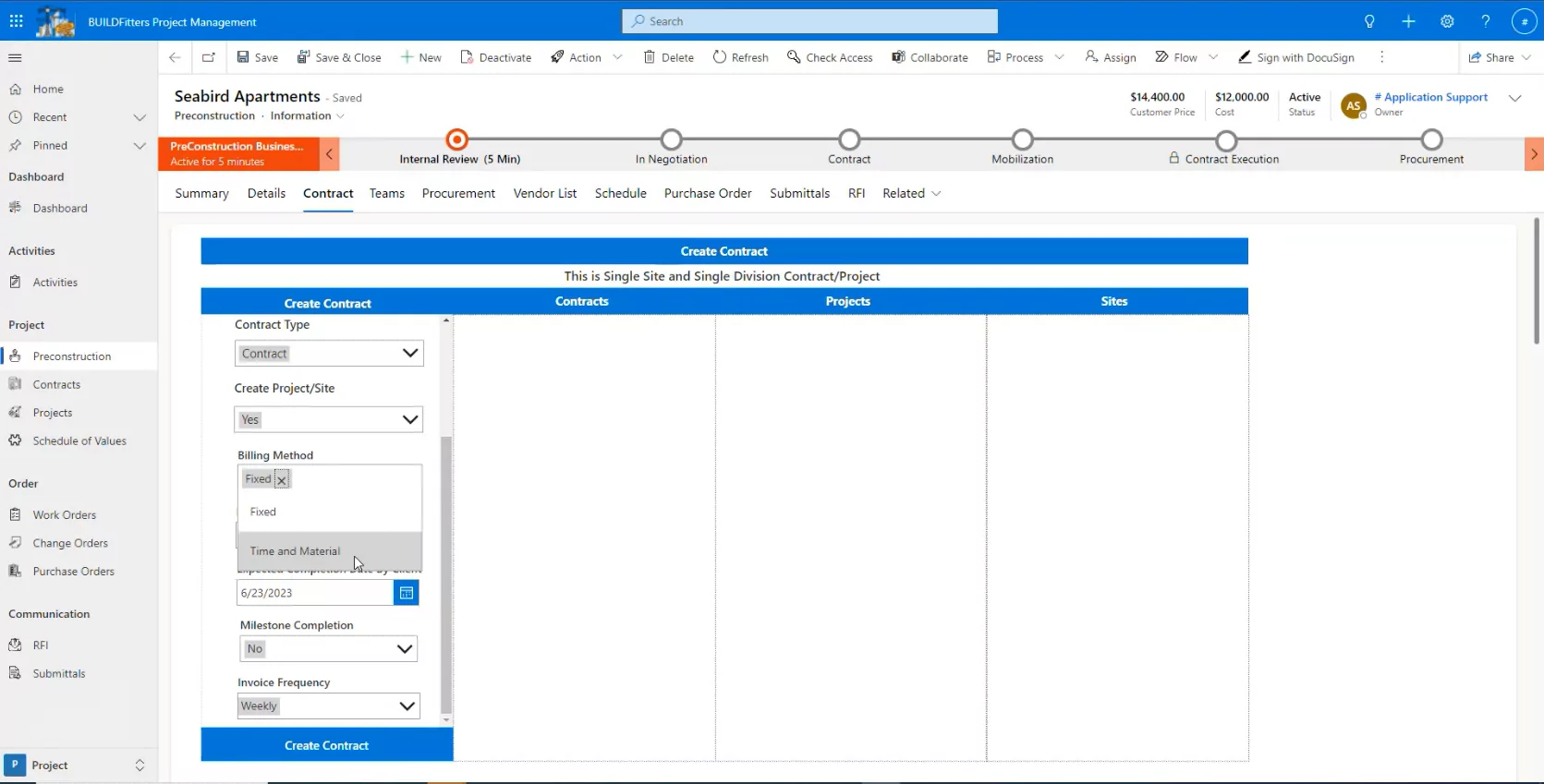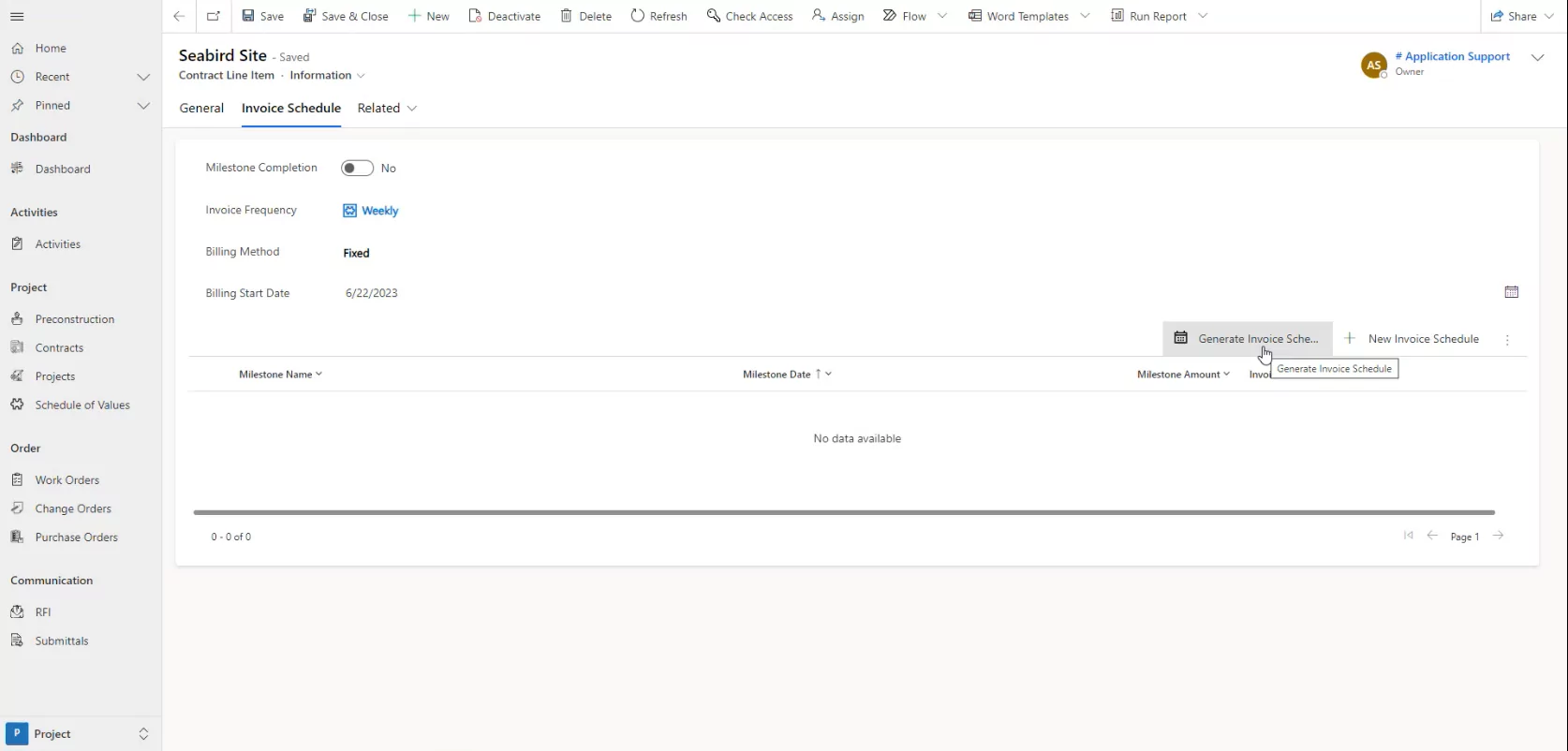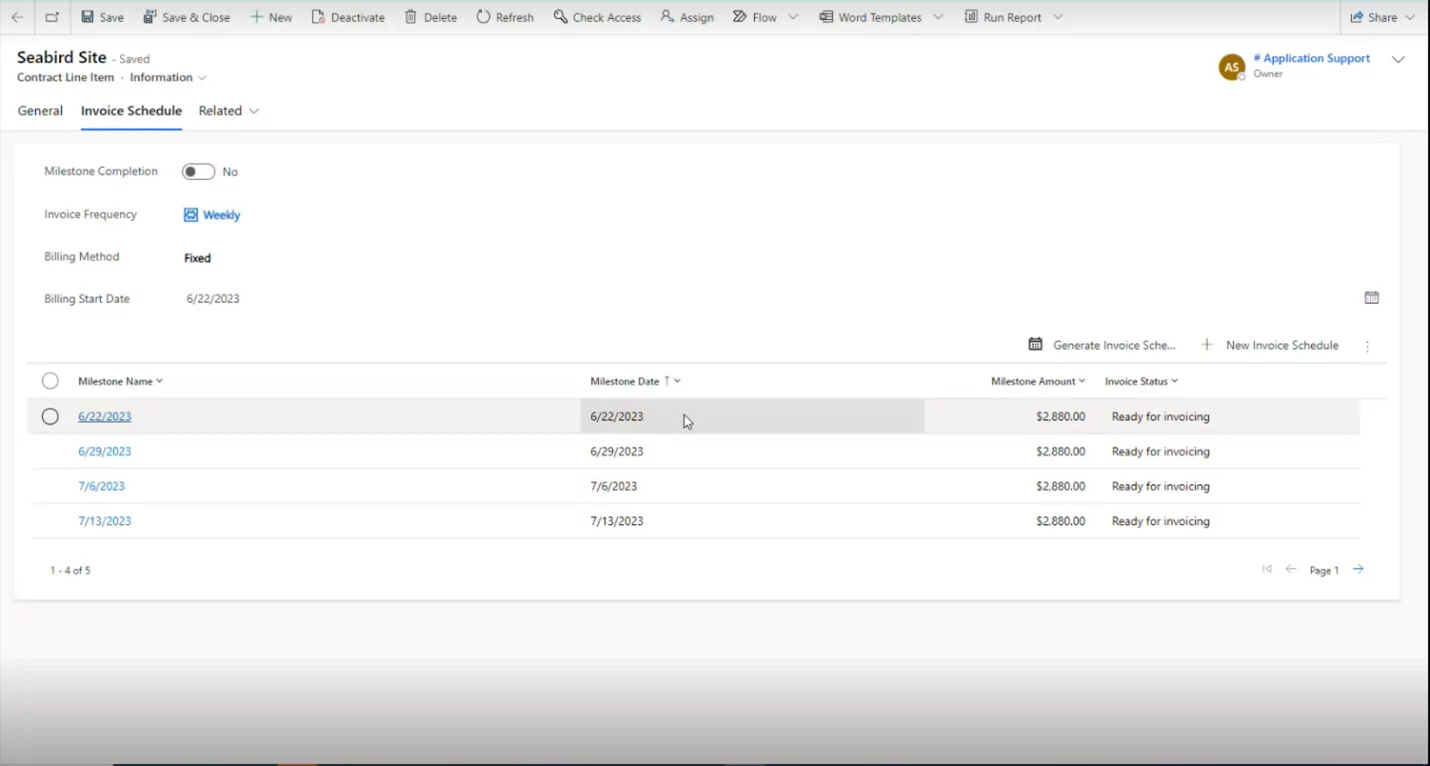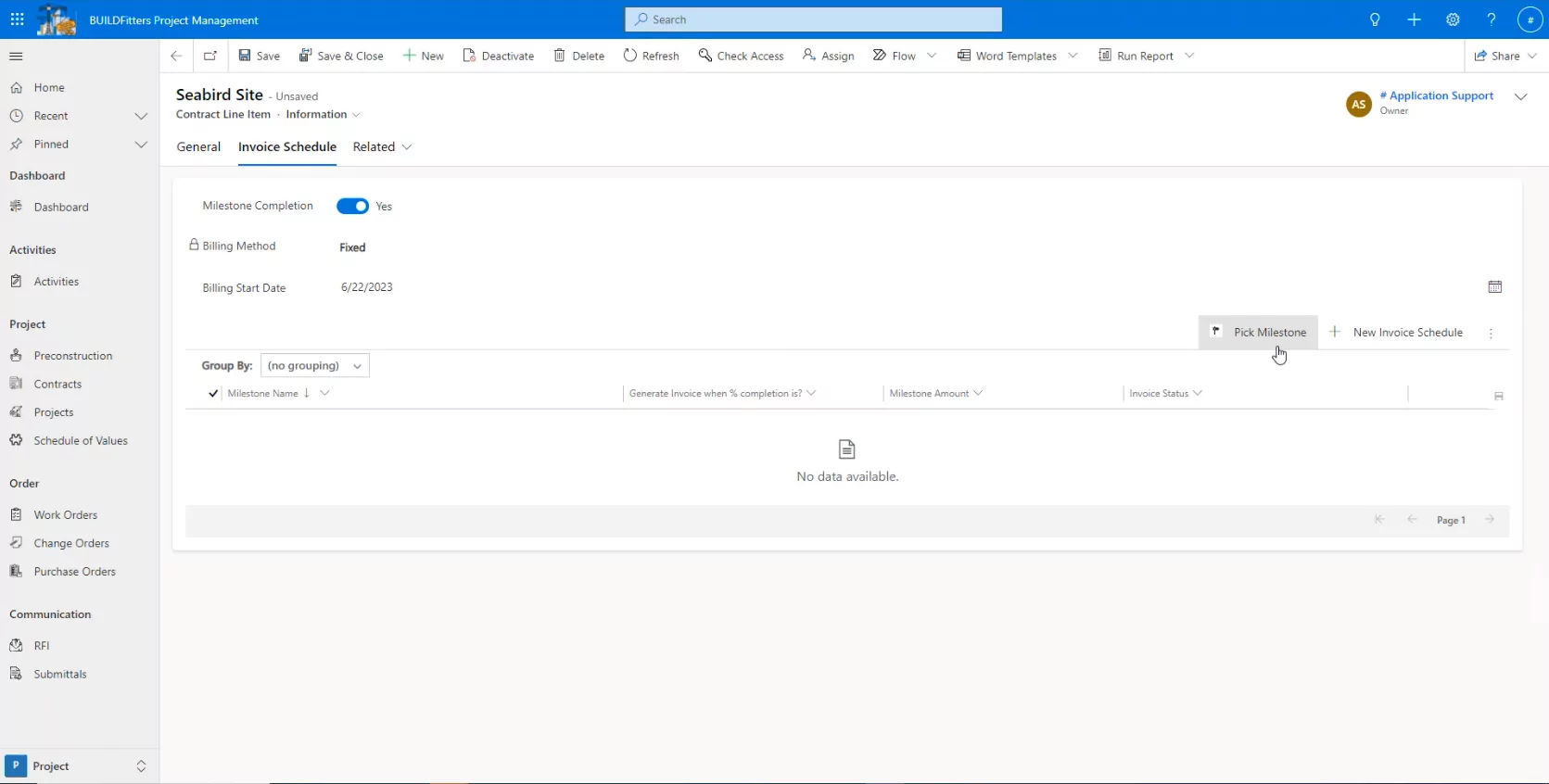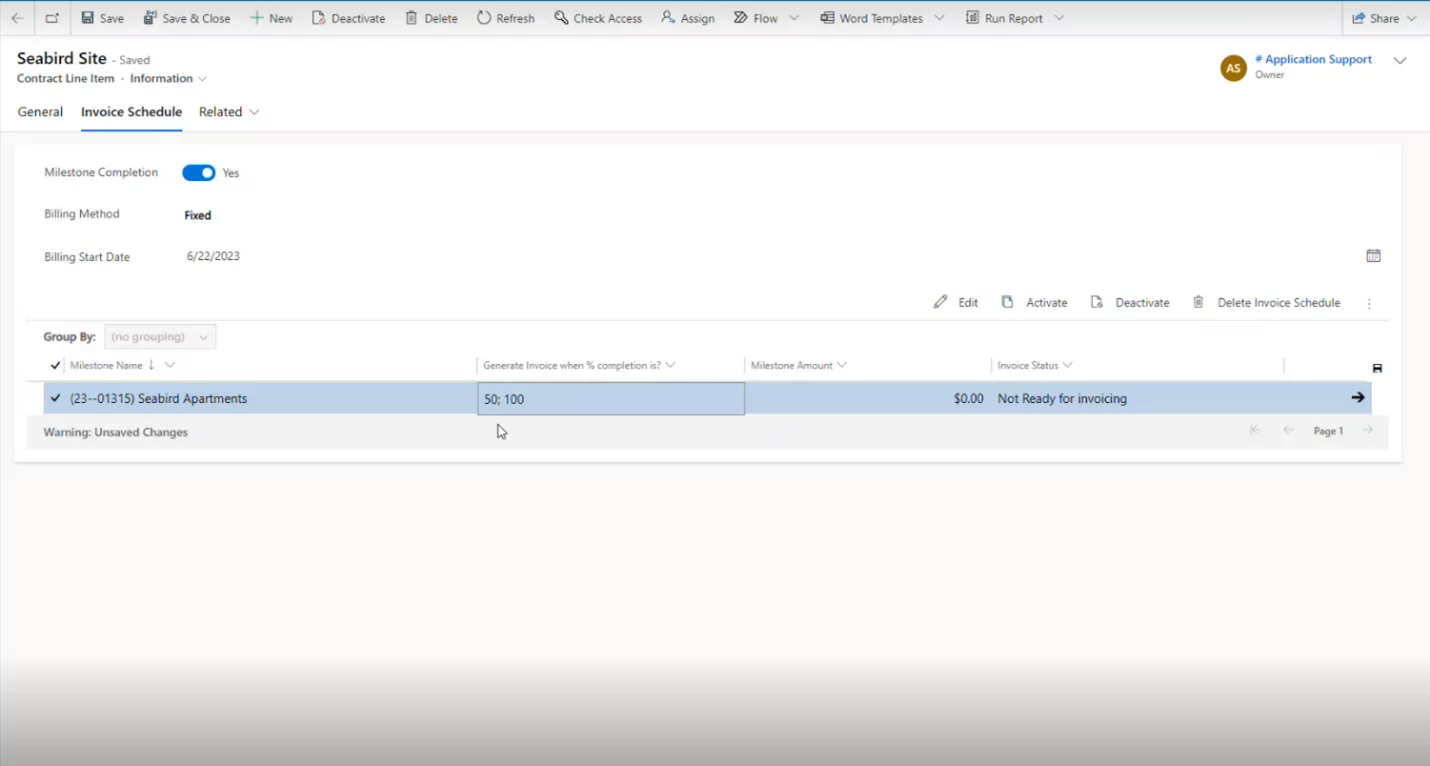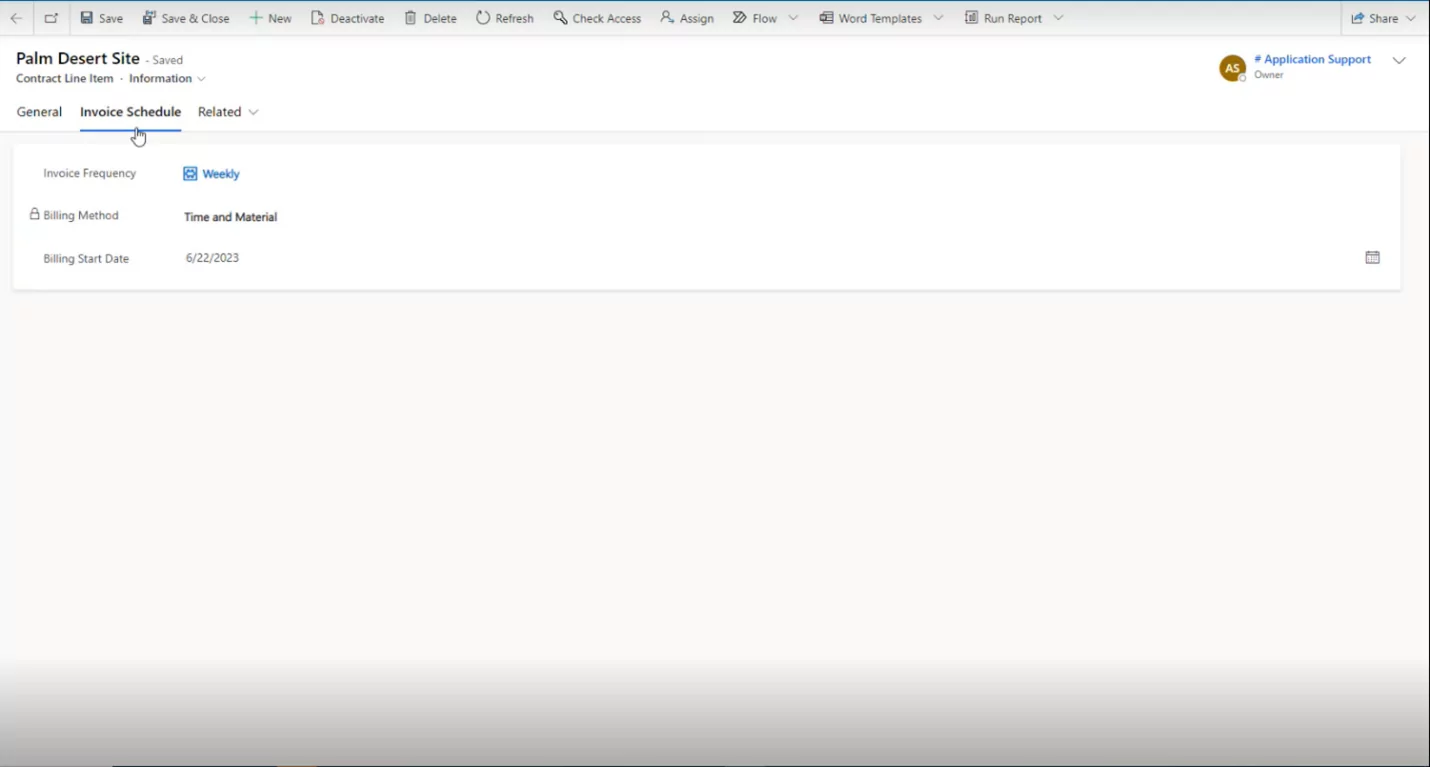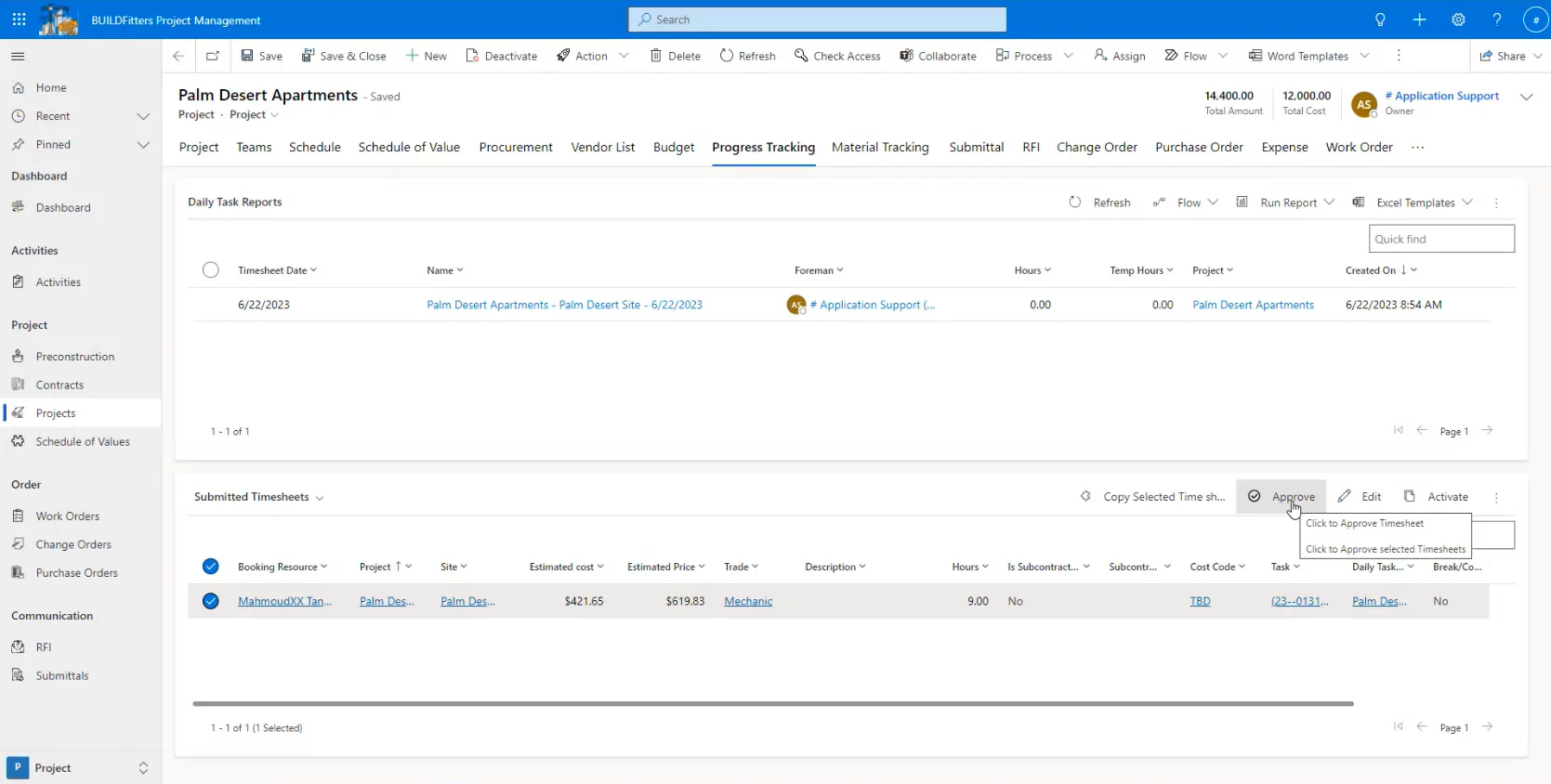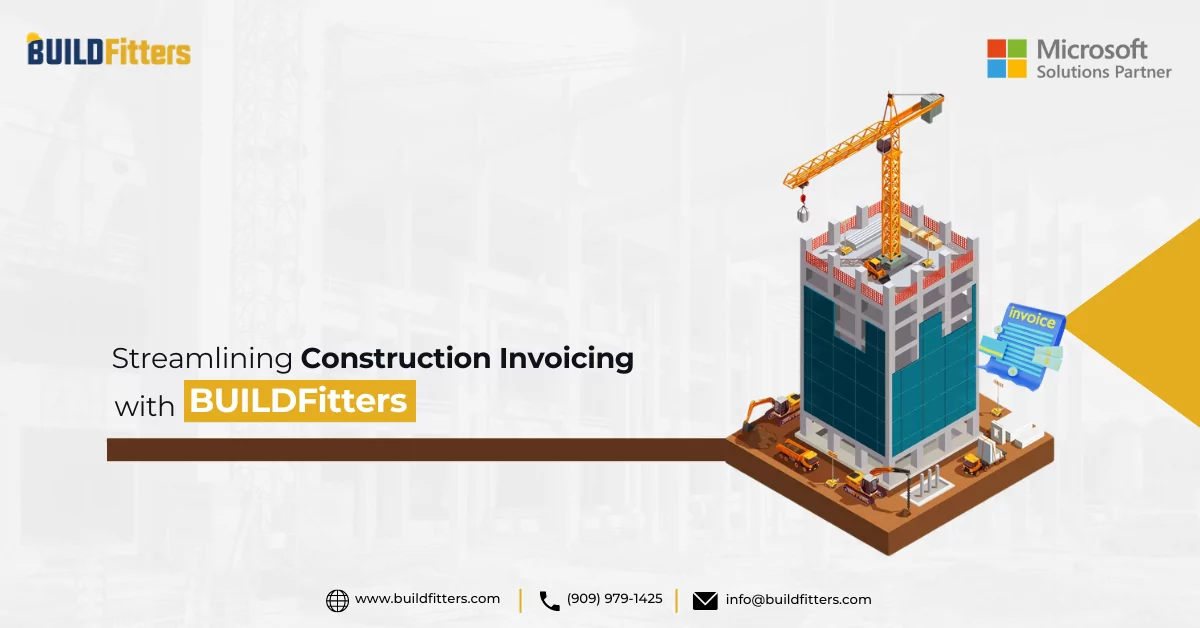
Streamlining Construction Invoicing with BUILDFitters
Introduction
Achieving success in construction management is highly dependent on accurately measuring and monitoring cash flow through invoices. In recent years, invoice management has become crucial to keeping processes streamlined. This surge in importance stems from the fact that bolstering the financial strength of a construction firm depends on effective billing and budgeting practices.Therefore, finding a good construction invoicing software can be a game-changer for general contractors (GCs).
General Contractors can modernize their billing methods to avoid human errors and lag time, in turn enhancing cash flow and work productivity. Automated invoice alerts also minimize the number of past-due invoices. An invoicing solution in this context can be revolutionarily useful, enabling several automated business activities while simplifying income and boosting worker efficiency simultaneously.
Choosing the right software, however, can be daunting since factors like cost, user interface, tools, adaptability, and integration requirements may vary from project to project. This is where BUILDFitters’ construction invoicing software features come into the picture. BUILDFitters provides GCs with multiple centralized invoicing methods, allowing general contractors to utilize the same tool for diverse project typesIn simple terms, the BUILDFitters invoicing tool removes the barrier of time to value and enhances billing functionality for the construction industry.
This article will delve into the basics of construction invoicing and showcase the advantages construction professionals can gain from utilizing industry-specific software. Furthermore, we’ll dig into BUILDFitters’ construction invoicing solution, all the while emphasizing its features and methods.
Why is Construction Invoicing Crucial?
Construction invoicing is key to managing and sustaining financial stability in the construction sector. Invoicing, as it relates to the building sector, is the process of creating and sending out invoices for the labor work executed along with the equipment or materials obtained during construction projects.
Invoicing within the construction industry presents a unique set of challenges, distinguishing it from many other sectors. The nature of construction projects, which often span months or even years, involves multiple phases, subcontractors, materials, and unexpected changes, all of which complicate the billing process. Traditional invoicing methods struggle to account for progress payments, retainage, change orders, and other project-specific variables that can vary from one job to the next. Furthermore, discrepancies in invoicing can lead to disputes, delayed payments, and strained relationships between stakeholders. The intricacies of construction contracts, coupled with the industry’s reliance on timely cash flow, underscore the pressing need for precise and efficient invoicing solutions.
Construction Invoicing Software: What It is and How It Transforms Billing
In the ever-evolving landscape of the construction sector, leveraging technology to simplify complex processes is no longer just an advantage—it’s a necessity. Enter construction invoicing software: a game-changer designed to bring clarity, accuracy, and efficiency to the intricate world of construction billing. At its core, this software is tailored to address the unique challenges and nuances of the industry, bridging gaps that traditional invoicing methods can’t. Whether you’re a contractor, a subcontractor, or an investor, understanding the transformative capabilities of construction invoicing software is essential for streamlined operations and financial health. In this section, we’ll delve into what this software encompasses and how it’s reshaping the billing landscape of the construction world.
Transparency in the billing process is not just a best practice; in the construction industry, it’s a linchpin for trust, timely payments, and sustained business relationships. Given the magnitude and complexity of many construction projects, stakeholders — whether they are clients, subcontractors, or financiers — seek clarity on where their money is going and why. A lack of transparency can lead to confusion, disputes, and unnecessary project delays.
This is where construction invoicing software comes into play. Here’s how it fosters a transparent billing environment:
- Detailed Breakdowns: The software allows for itemized invoices, providing clear insights into labor costs, material expenditures, equipment rentals, and other expenses. This level of detail ensures that clients understand every aspect of the billing, minimizing the chances of disputes.
- Real-time Updates: With cloud-based invoicing solutions, any changes made — be it a change order or a newly incurred expense — can be instantly updated and reflected in the invoice. This ensures that all parties are always on the same page about the project’s financial status.
- Historical Data Access: Many invoicing software solutions maintain a history of past invoices, payments, and even disputes. This archive proves invaluable for future project planning and in situations where historical billing data needs to be referenced.
- Automated Compliance Checks: With built-in features that adhere to industry standards and regulations, the software ensures that all invoicing is compliant, reducing the risk of legal complications.
- Centralized Communication: The software often comes with integrated communication tools, allowing stakeholders to discuss, clarify, and resolve any billing queries directly within the platform. This centralization reduces back-and-forth emails and ensures that all communication threads are easily traceable.
In essence, construction invoicing software acts as a beacon of clarity in the often-murky waters of project billing. By offering transparency it not only minimizes misunderstandings but also fortifies trust among all parties involved, paving the way for smoother project executions and lasting business relationships.
For more insights into challenges of traditional financial management in construction projects, read our recent blog: Streamlining Construction Purchase Orders with Technology.
Navigating Invoice Automation With BUILDFitters
In the fast-paced environment of construction, where timelines are tight and every minute counts, manual invoicing can become a cumbersome bottleneck. Beyond just being time-intensive, manual processes are prone to errors, which can result in costly disputes or payment delays. Invoice automation, therefore, emerges not just as a luxury but as a critical necessity for modern construction businesses. Here’s why it’s making waves:
- Time-Savings: Automated invoicing systems swiftly generate invoices, pulling data from various project touchpoints, eliminating the hours spent manually creating and verifying each bill.
- Error Minimization: Human error is an inevitable part of manual invoicing, whether due to oversight, miscommunication, or data entry mistakes. Automated systems reduce these errors significantly by standardizing calculations and pulling from trusted data sources.
- Consistent Cash Flow: Automated reminders and follow-ups ensure that payments don’t fall through the cracks. With timely invoicing and reminders, there’s a better chance of maintaining consistent cash flow, which is vital for the ongoing operations of any construction project.
- Scalability: As construction businesses grow, so does the volume of invoicing. Automation ensures that increased billing doesn’t result in proportionally increased administrative work. The system seamlessly scales with the business, handling more complex and voluminous billing with the same efficiency.
- Enhanced Analysis and Reporting: Automated systems don’t just generate invoices; they can produce insightful reports, tracking payment trends, outstanding dues, and other vital financial metrics. This data is invaluable for business strategy and financial planning.
- Sustainability: In an increasingly eco-conscious world, reducing paper waste is a commendable goal. Digital, automated invoicing contributes significantly to this, as it negates the need for physical invoice prints and mailing.
In the dynamic arena of construction, where every detail matters and delays can cost a fortune, invoice automation stands out as a beacon of efficiency. It’s more than just a technological advancement; it’s a strategic advantage that propels businesses toward better financial management and streamlined operations.
At the heart of trustworthy billing lies meticulous calculation methodologies. Accurate calculation of invoices is important for both parties: contractors and clients. The correct calculation method is the building block of accurate invoicing. Miscalculated amounts can lead to avoidable workplace disputes, disagreements, and delays in payment reception. Embracing precision in the calculation process becomes more than just best practice- it’s a proactive measure to sidestep potential challenges and ensure harmonious progression.
With BUILDFitters’ construction invoicing solution, contractors can choose the calculation method that perfectly aligns with the terms and requirements of their agreements.They can do fixed bid invoicing based on milestone completion. These milestones can be driven by project schedule and task completion, or these milestones can be set manually with manual percentage completion. BUILDFitters also allows for invoicing on time and material contracts based on the actuals against the project. Users can set up an invoice schedule after creating contracts, projects, and sites under a particular project. Details like price list, duration, and total cost are all available under the project.
STREAMLINE YOUR INVOICING WITH BUILDFITTERS
Tired of complex invoicing in construction management? Experience firsthand the benefits BUILDFitters brings to your financial management. Request a Demo Today and Transform Your Invoicing System!
Let’s go through all the invoice automation options that BUILDFitters provides.
Fixed Price
BUILDFitters’ construction invoicing software allows invoice automation for fixed-budget projects based on milestones or a billing frequency. These projects involve a predetermined amount that will be spent. The details of this amount, like the total budget available and the project cost, can be seen in the budget tab. Remember, there can be multiple milestones under one project.
1. Schedule-based Projects:
Not selecting the milestone option allows creating an invoice generation schedule that may be weekly, twice a month, or as per the requirement. BUILDFitters’ invoice automation also enables the selection of the day for generating the invoice. For instance, if you choose Thursday on a weekly basis, the software will generate an invoice every Thursday.
Once the schedule is created, the total amount of the project is divided into invoices per the project’s start and end date. This amount is taken from the price of the project. Creating a schedule means payments are ready for invoicing but haven’t been invoiced yet. The software will match the invoicing dates and execute the task by creating the invoice on the specified date, i.e., every Thursday.
In addition to checking invoices generated, users can also see the total budget assigned to the project and the total amount spent accordingly.
2. Milestone-based Projects:
Milestone-based invoice generation offers simplicity and clarity. This option can be used for projects with well-defined deliverables. Switching to the milestone option constricts weekly or monthly invoice generation on demand. Users can also specify tasks under a milestone after creating the milestone separately and choosing the end and start day. Once the project schedule shows milestones, decide on the invoice schedule.
The invoices can be generated per the project’s progress and completion. For example, writing 50,100 in the schedule means one invoice will be generated when 50 percent of the project is complete and the next one when it’s 100 percent complete.
After creating the timesheets and approving them, the system can track the project’s progress automatically. An invoice will be generated once the project reaches 50% completion status.
3. Variables (Time and Material):
BUILDFitters’ construction invoicing automation features also offer an alternative method based on variables such as time and materials rather than a predetermined fixed amount outlined at the contract’s outset. With this invoicing method, there’s no milestone-based invoice generation system; instead, it operates on a schedule—weekly, biweekly, or monthly.
Utilizing this calculation method entails selecting a price list when creating a contract. The next step after selecting a price list is creating time sheets by entering the cost and prices of materials. The time, material, and other expenses on the timesheet will be used to calculate the total amount charged to the client. Therefore, time sheets should be created with careful consideration.
Once the timesheets are submitted and approved, the invoice schedule initially created will be updated. If the schedule is set to create an invoice every Thursday, the system will generate an invoice with the total amount based on the approved timesheet. Any purchase order created before Thursday will also be a part of this invoice.
TRANSFORM YOUR CONSTRUCTION INVOICING WITH BUILDFITTERS
Ready to revolutionize your construction project management? Dive into the world of BUILDFitters and explore its game-changing invoicing features. Connect with our experienced experts to learn how BUILDFitters can elevate your operations to new heights.
Conclusion
Thorough configuration of invoice schedules and multiple automation options allows GCs to enhance and streamline their operations. The BUILDFitters’ construction invoicing solution is an adaptable software catering to various needs under one platform. It offers versatile calculation methods and provides transparent financial transactions, a much-needed feature in the construction industry. Ultimately, this approach empowers construction experts to pilot through complicated invoicing processes.
If you are interested in learning more about BUILDFitters and how it helps you reach out to our team of experts for more information.
In the multifaceted realm of construction billing, meticulously structured invoice schedules combined with robust automation capabilities become indispensable tools for General Contractors (GCs) striving for excellence. BUILDFitters’ invoicing solution stands out as a versatile powerhouse, offering a suite of calculation methodologies tailored for diverse needs, all while championing transparency in every financial transaction. Such a holistic approach is instrumental in navigating the intricate invoicing labyrinth that defines the construction industry.
For a deeper dive into the transformative capabilities of BUILDFitters and to discover how it can elevate your operations, we invite you to connect with our seasoned experts.

